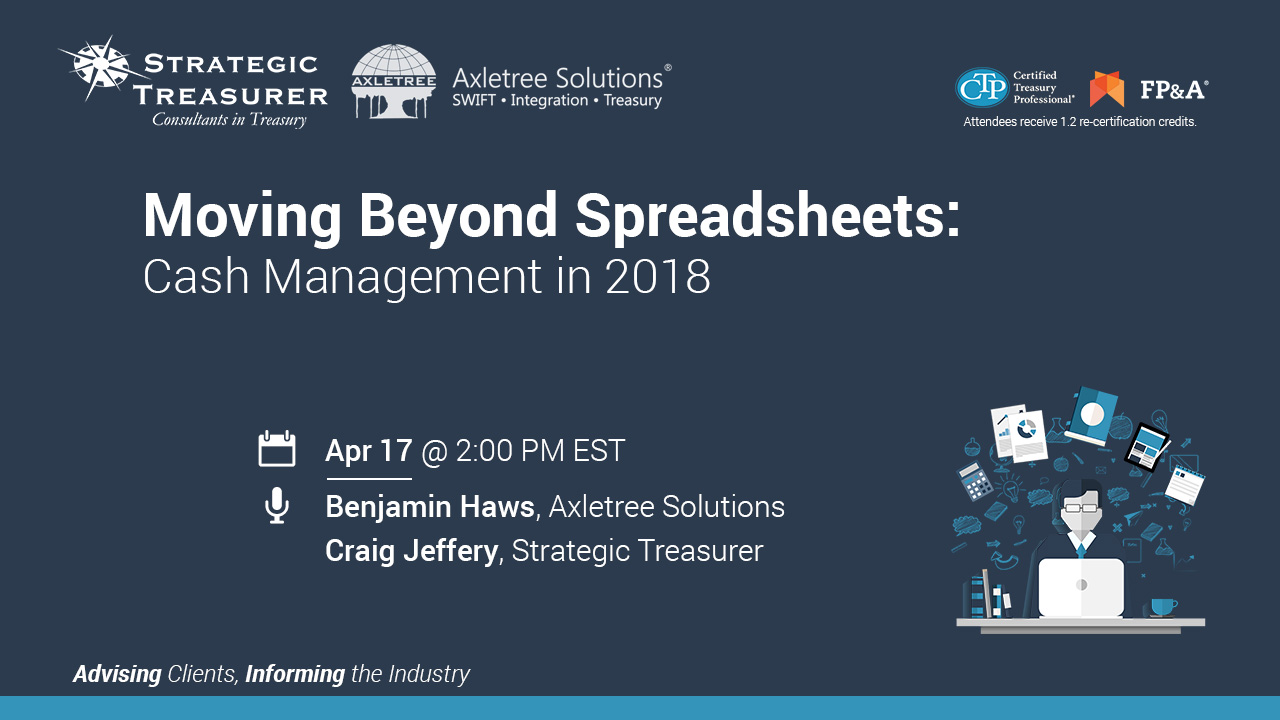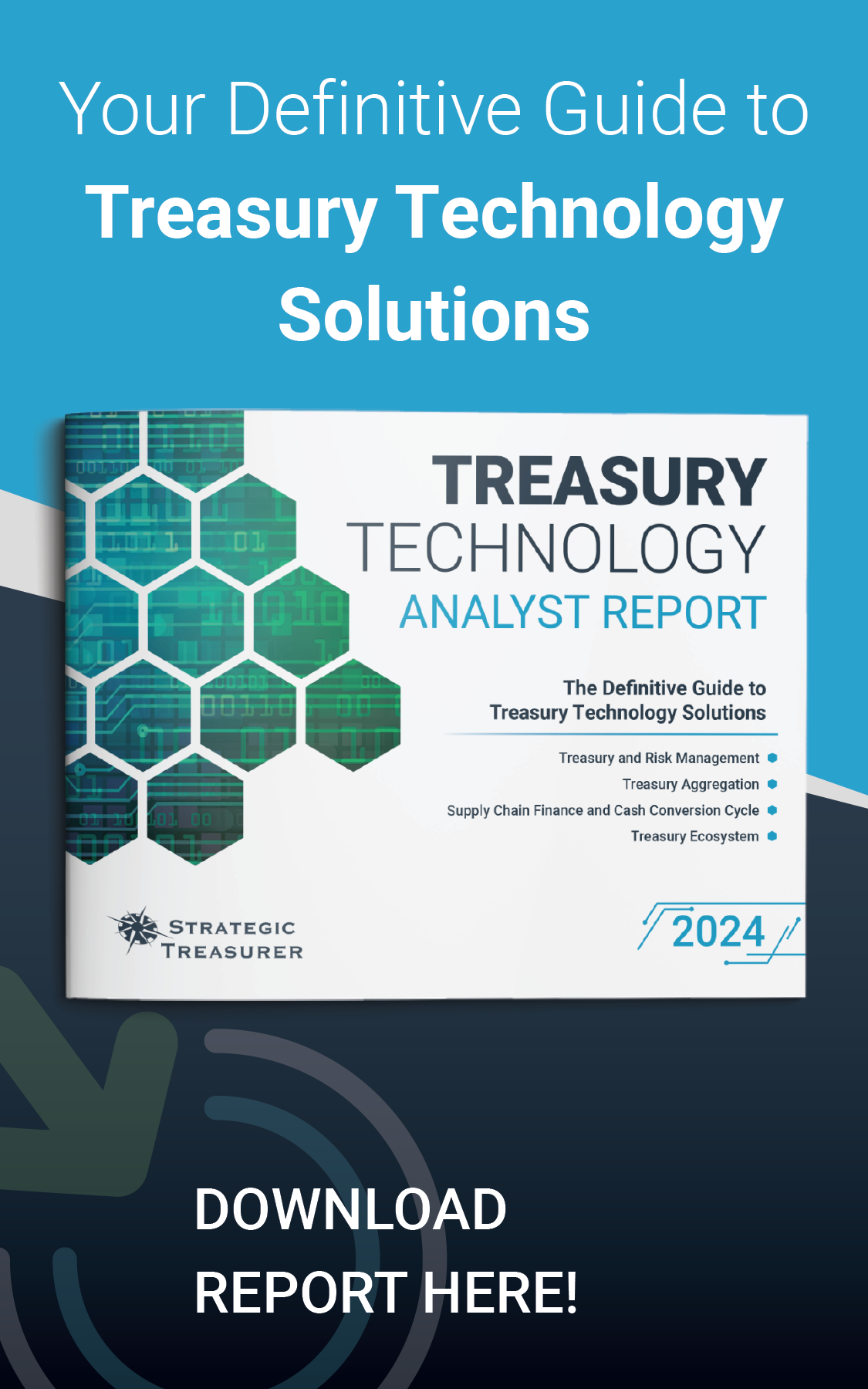Due to the availability of spreadsheets and their ease of modification, these practices are understandable but not optimal.
Moving Beyond Spreadsheets: Cash Management in 2018
Date: Tuesday, April 17th, 2018
Time: 2:00PM – 3:00PM EST
Where: This is an online event.
This session will aid users in understanding the risks of using sub-optimal resources and the benefits of leveraging best practices and constantly improving technology.
1.2 CTP and FP&A re-certification credits will be given for this webinar.
You may also be interested in:
Webinar: Thriving as a Treasurer Amid Economic Volatility | July 15
In a world shaped by central bank decisions, labor market shifts, and evolving trade dynamics, businesses are facing increasing volatility. While the future remains uncertain, standing still is not an option. How can treasury teams rise to the occasion? Join this webinar to explore practical insights and strategies that empower treasury professionals to adapt, stay effective, and support their organizations through turbulent times.
Webinar: Instant Global Settlements: Blockchain in Action | July 10
Blockchain is reshaping cross-border payments through real-time global settlement. In this webinar, Strategic Treasurer and Zeconomy will explore how corporates are using blockchain rails and digital commercial paper to unlock faster payments, reduce FX costs, and increase control—all with enterprise-grade compliance and auditability. This session highlights practical use cases and actionable insights to help treasury teams navigate the future of programmable, capital-light cash management.





